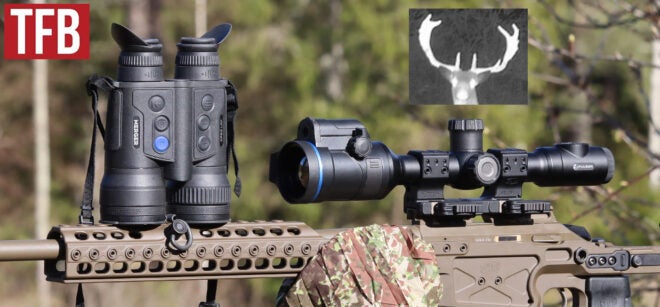This is a review of the Pulsar Merger LRF XL50 High Definition Thermal Binoculars. High definition thermals for commercial use started appearing last year, and in 2024 we will see more and more of them. This review is TFB’s second on the subject of HD thermals, and my first. The device reviewed here is a private purchase, and it’s been my companion since the spring of 2023. After almost 10 months of ownership, it’s time to conclude what I’ve discovered.
Pulsar Vision @ TFB:
- TFB Review: Pulsar Merger LRF XP50 Thermal Binoculars
- TFB Review: Pulsar Telos LRF XP50 – New Upgradeable Thermal Monocular
- TFB Review: Pulsar Thermion 2 LRF XP50 Pro Thermal Riflescope
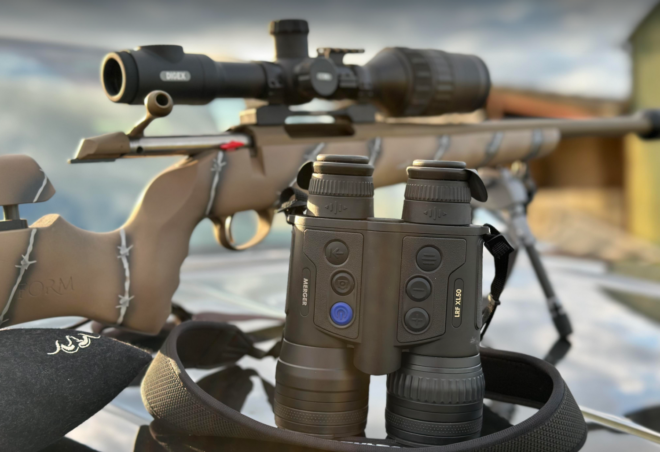
Pulsar Merger LRF XL50 Photo: Country Sport Media
Introduction
One of the main benefits of thermal binoculars, or bi-oculars, is that they’re more relaxing for the eyes to use than a monocular. I also get the impression that you see better, and get more details and “conclusion” out of the image. I use mine mainly when I’m hunting and scouting. When I get to my country house my habit is to scan the fields around, just to see what doesn’t want to be seen. I love it when I go out at night when the sun has set, and watch all the animals around my house. These thermal binos can be used for finding anything really. I use it during winter to examine leaking heat from my windows or ventilation.
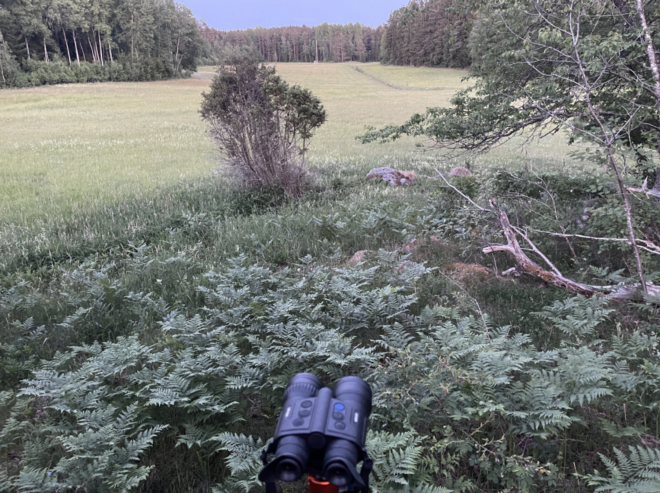
A couple of girls hit a deer with their car, so I stopped to see if I could help. Brought the Merger XL50 out, and I was quickly able to find the deer across the road, hidden under a tree, so we could call the game warden and point it out.
In a law enforcement situation, it’s easy to find bad guys who are hiding (depending on the scenario, of course, thermals are not X-rays). Finding missing people is another possible use. Drones are also really easy to spot. Their engines get really hot, and you can usually see them from hundreds of meters away.
Below: What’s difficult for you to see is no match for the Merger XL50, even in the morning fog.
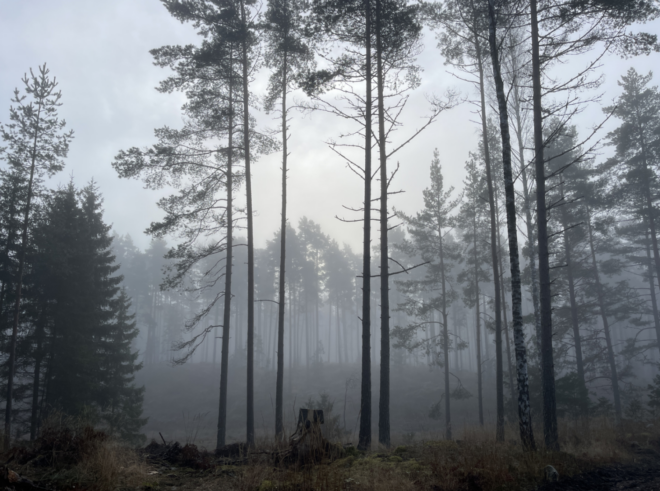
Technical Specifications
So what’s behind all this superpower? The HD thermal sensor is made by Lynred in France and has a 1024×768 @ 12 µm, 50 Hz frame rate. The NETD is <40 mK (the lower the better). Most thermals seem to have a NETD value around 40-60 nowadays, but some – like the Pulsar Telos LRF XP50 – go down to <18 mK, which makes it really sensitive to changes in heat.
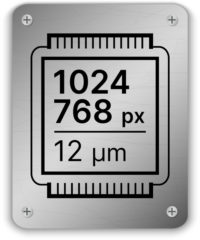
The objective lens uses F50/1.0 and the binos have a magnification between 2.5 – 20 (x8 zoom). The Field of View (FOV) is between 14×10.5 degrees or 24.6 to 18.5 meters at 100 meters. The interpupillary distance adjustment is 62 – 74 mm, so you can adjust the eyepieces to your comfort. The eye relief is 15 mm, and you’re looking at an AMOLED HD display with 1024×768 pixels.
To compare, the smaller brother Merger XP50 LRF has a 640×480 sensor, with <25mK sensor and 1800 meter detection range. So, in short, with the XL50 model you get a lot more pixels, but lower thermal sensitivity.
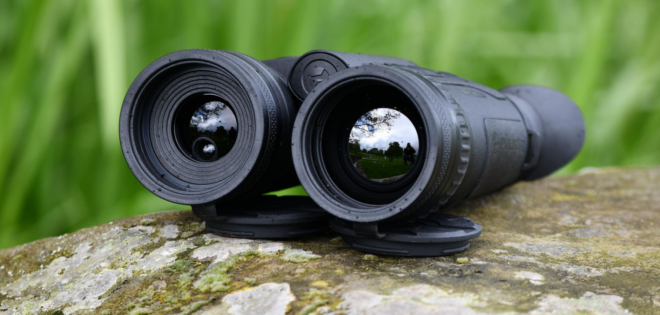
Pulsar Merger LRF XL50 Photo: Country Sport Media
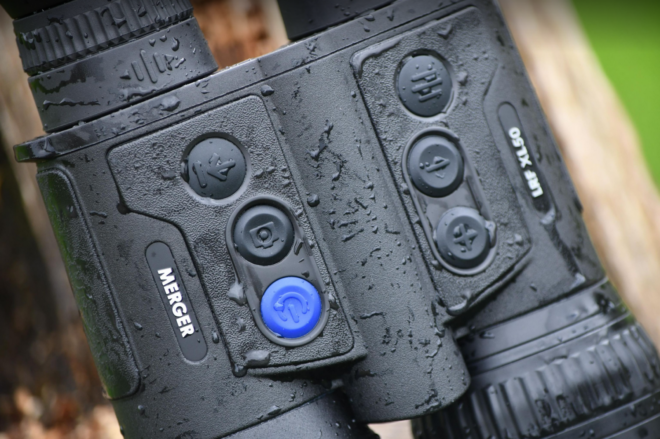
Pulsar Merger LRF XL50 Photo: Country Sport Media
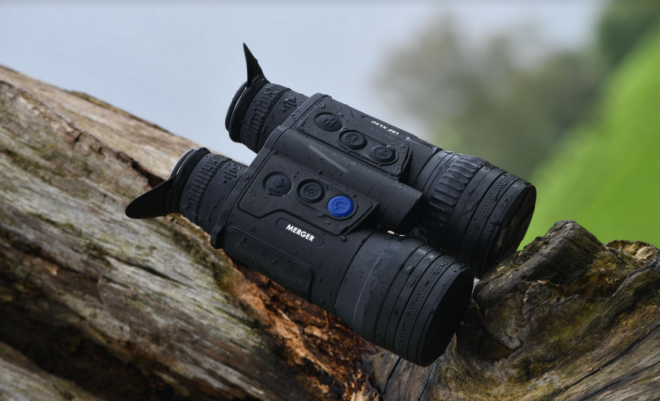
Pulsar Merger LRF XL50 Photo: Country Sport Media
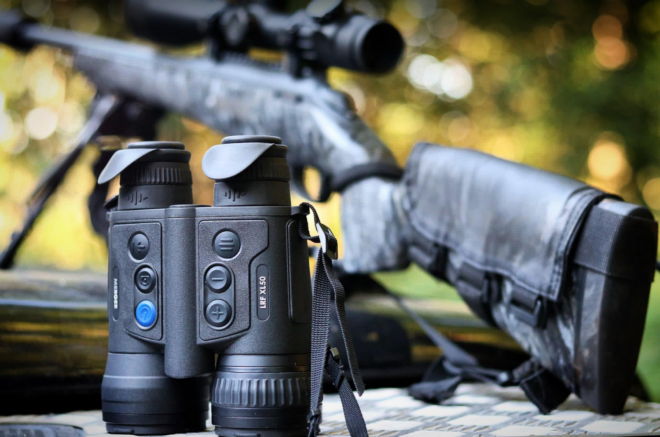
Pulsar Merger LRF XL50 Photo: Country Sport Media
Proximity sensor
The Mergers have a proximity sensor, to save battery and to avoid exposure from the backlight of the oculars in the dark. When the device is moved away from the user’s eyes, a proximity sensor turns off both displays and when the device is brought closer, both displays are turned on and deliver high-quality images. This feature works great.
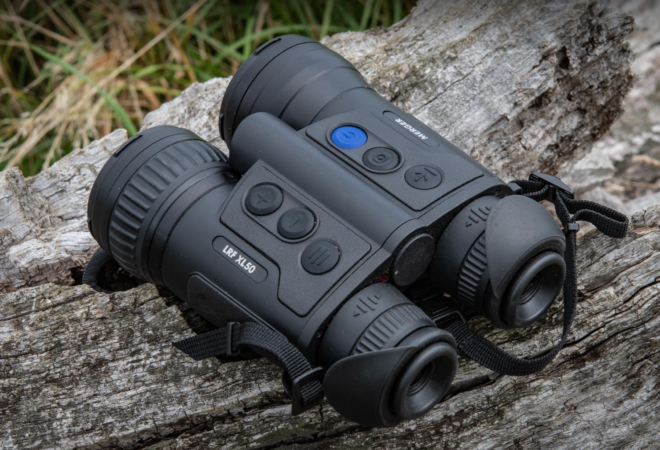
Pulsar Merger LRF XL50 Photo: Country Sport Media
The buttons work with a press and long press to add functionality.
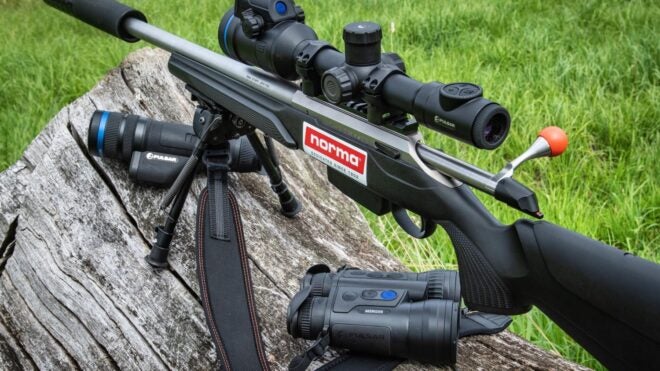
Pulsar Merger LRF XL50 Photo: Country Sport Media
Batteries and Power
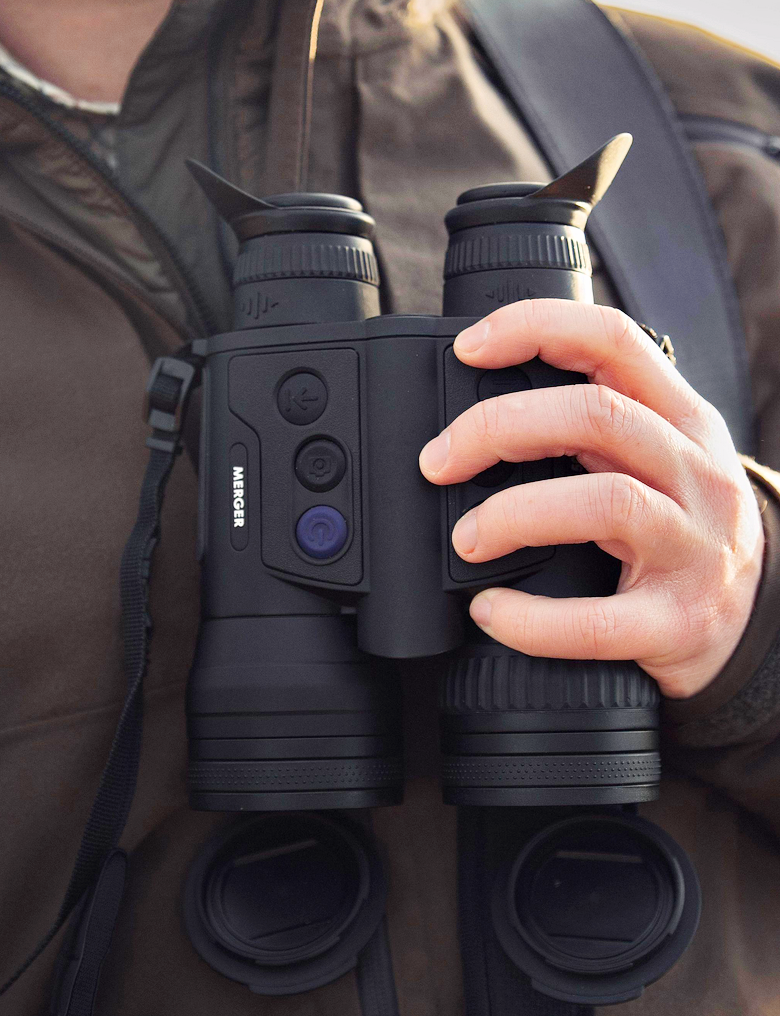
Pulsar Merger LRF XL50 Photo: Joel Henrysson
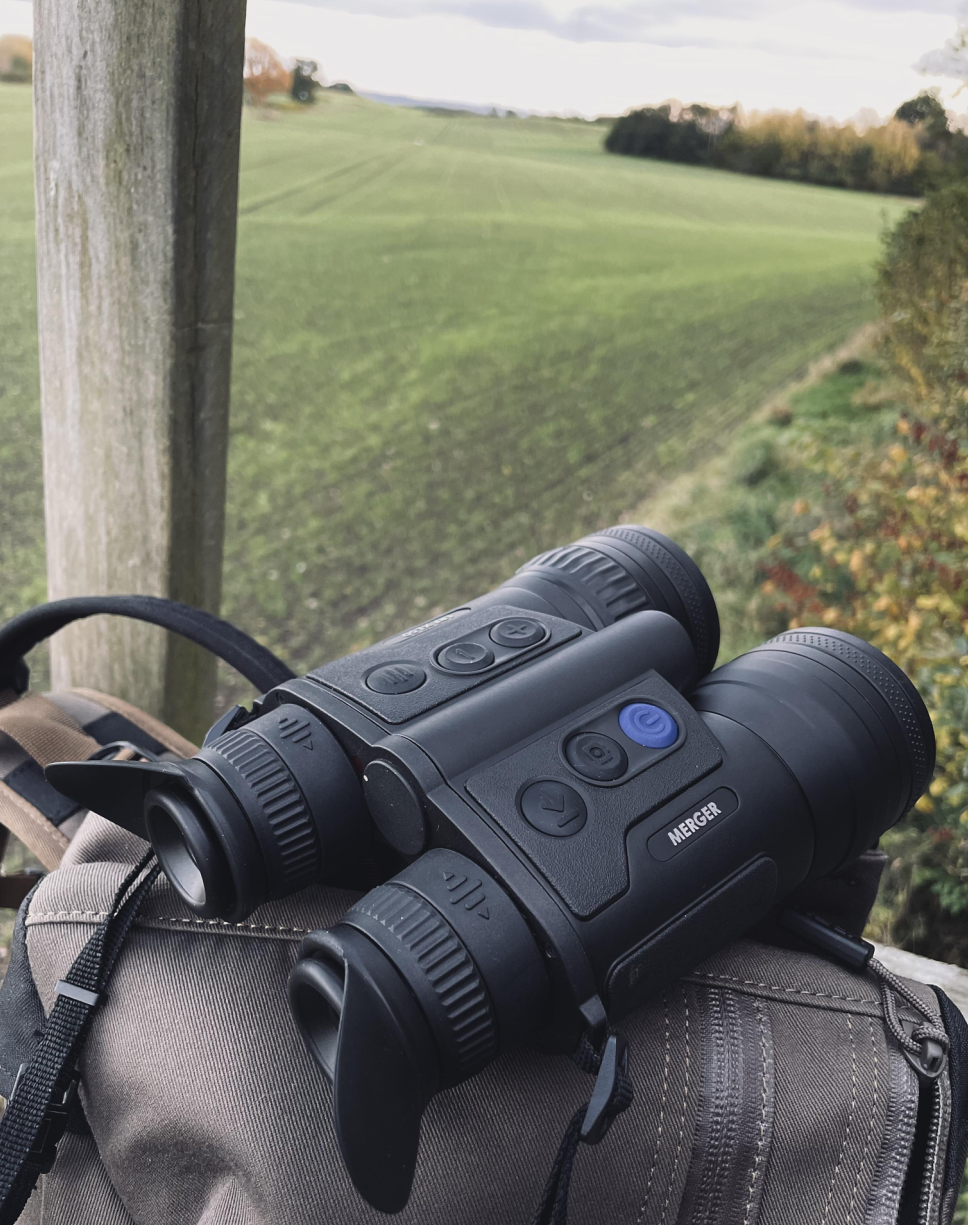
Pulsar Merger LRF XL50 Photo: Joel Henrysson
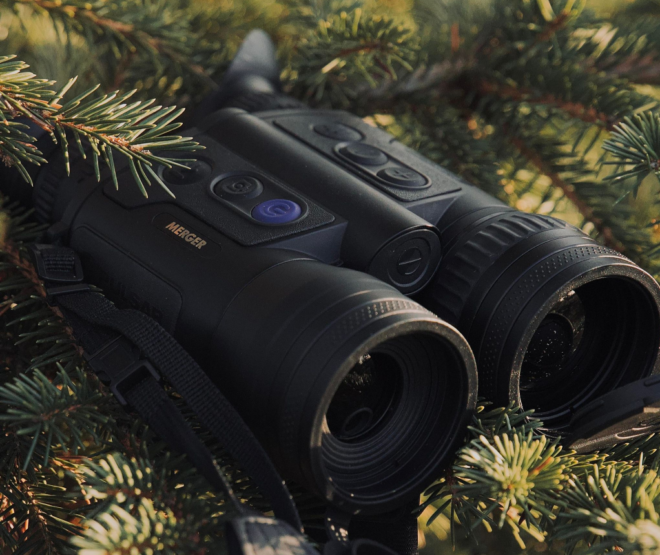
Pulsar Merger LRF XL50 Photo: Joel Henrysson
Image Quality
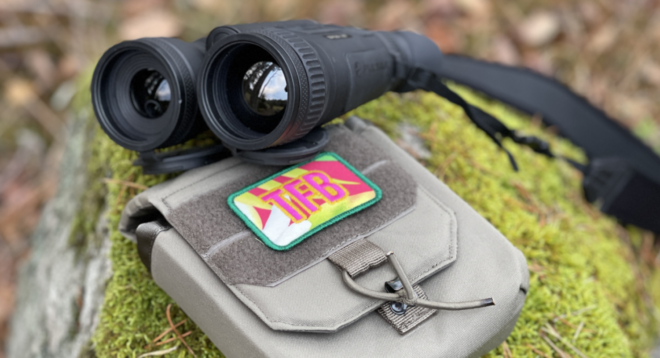
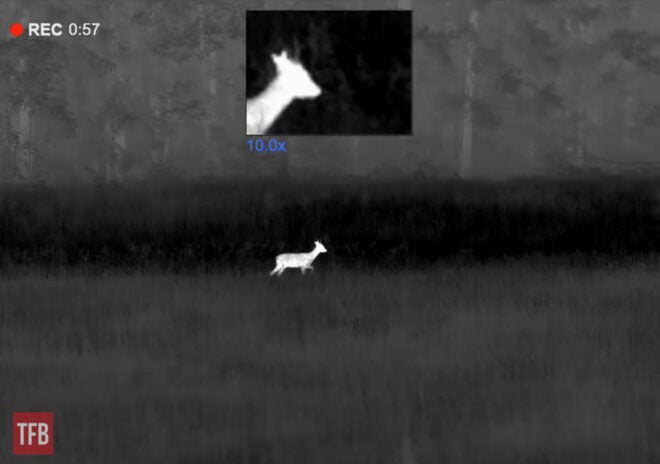
Those who know thermals know that zooming in will create a Minecraft / LEGO brick image as soon as you even think of the word. The Merger XL has a lot of power to play with, and this is at a maximum magnification of 20 power. I rarely use a tripod with the Merger, as I need to be portable. However, the use of a tripod or similar support will help especially as you zoom in.
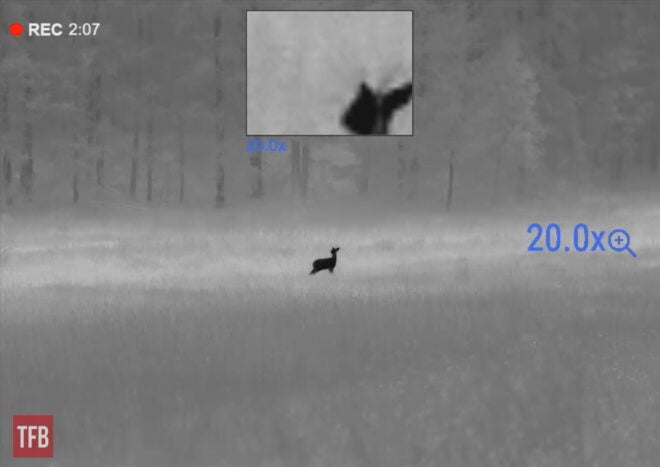
Wild boar with some newborns. This is during late autumn, so far from ideal conditions for thermals.
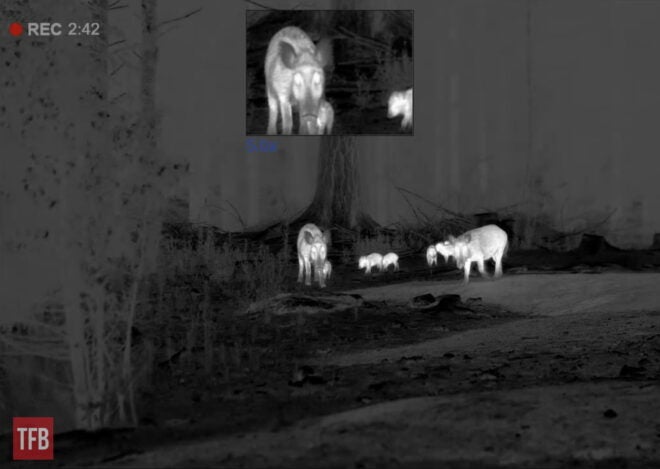
A rare sight. A piglet going for some wild boar milk.
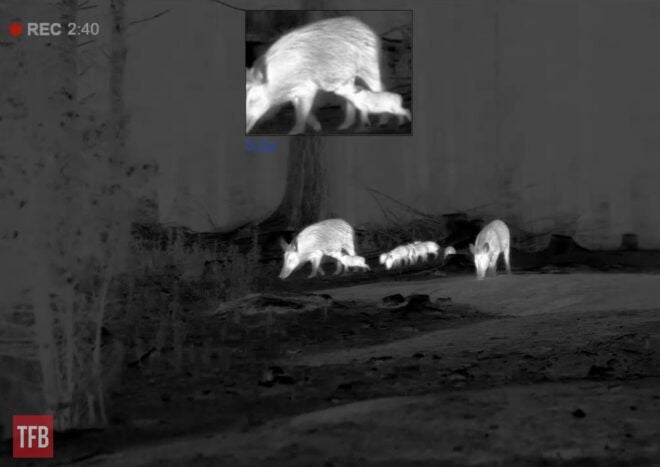
It was pitch black outside, and I was really scared when I saw this sight. I thought they were rats coming towards me.
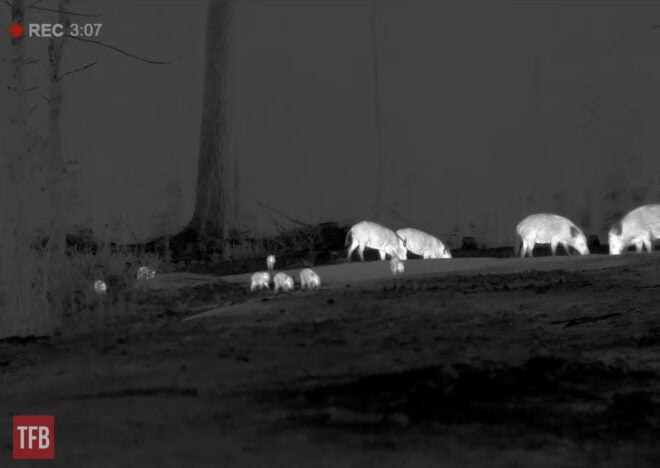
A hunting tower at 288 meters. The Merger LRF can calculate true distance, with angles, etc.
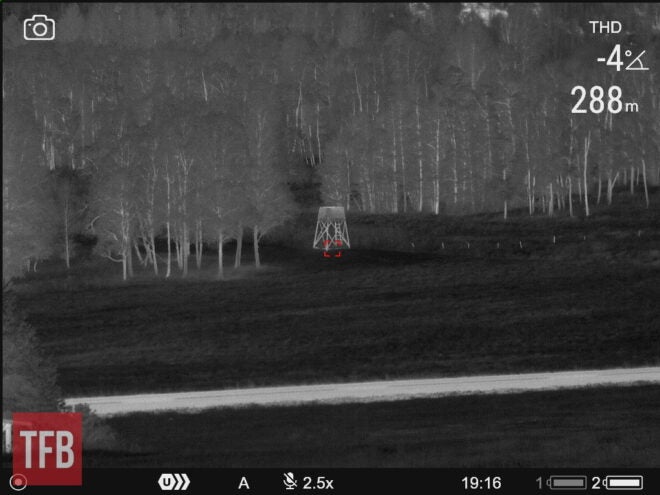
Pitch black outside. Wonderful sight.
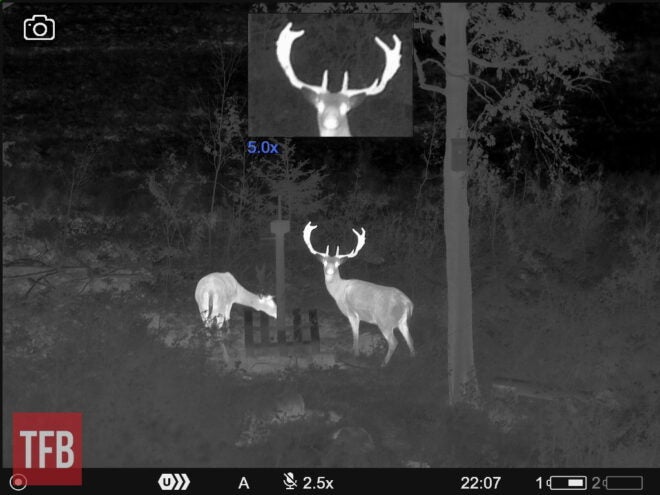
This is the one-horned deer.
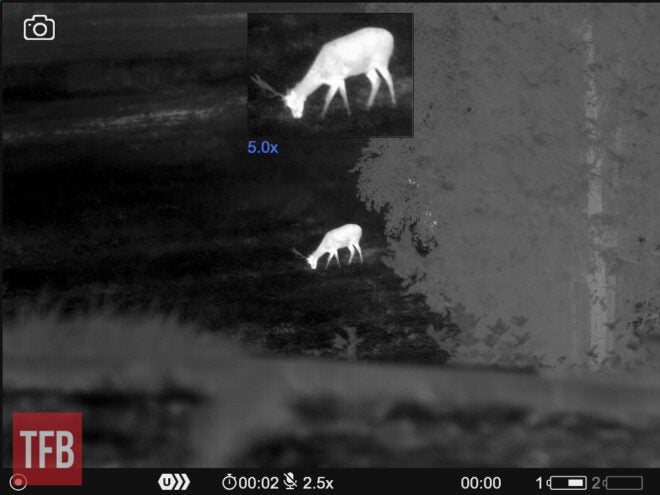
Wild boar mum, zoomed in at 10x, and a bit out of focus. In some countries, it is illegal to shoot the sow if it has piglets. This one clearly has pulled teats, so illegal to shoot.
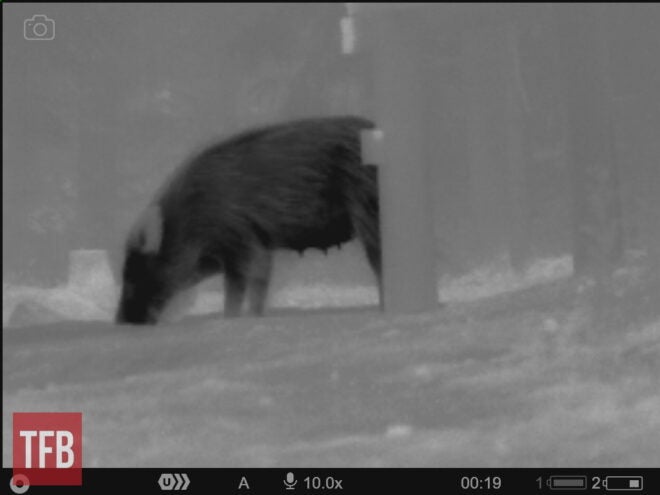
Bird watchers beware of new gear you can use. I think this is a Green Woodpecker, a baby bird with a few things to learn.
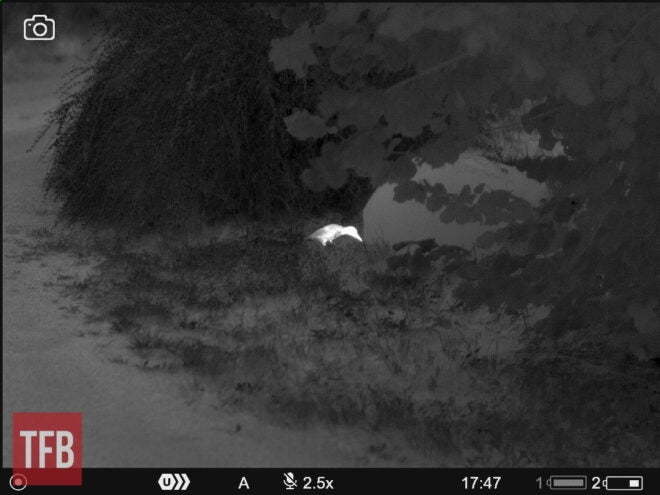
Merger XL in sunshine. Note the lawn mover parked in the shed.
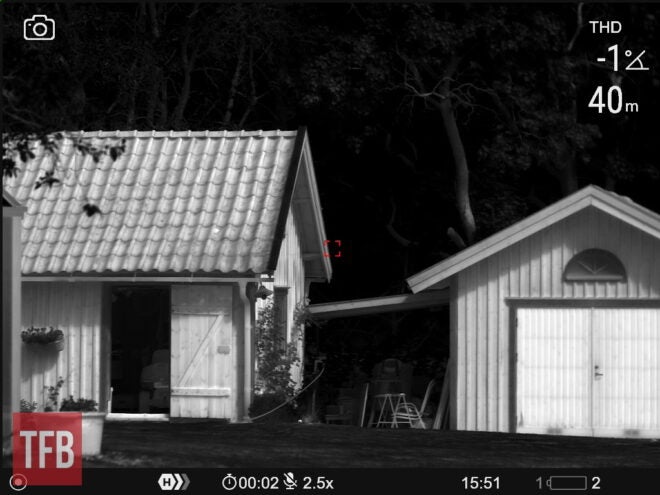
Photo taken by iPhone as a reference.
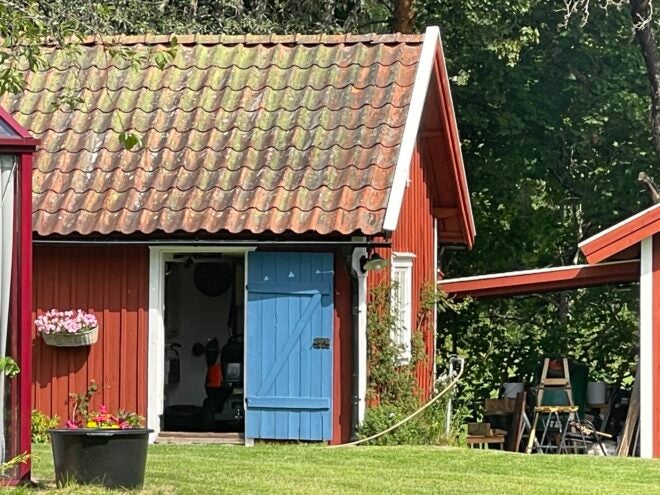
Lawn mover outside. You can see a bicycle inside.
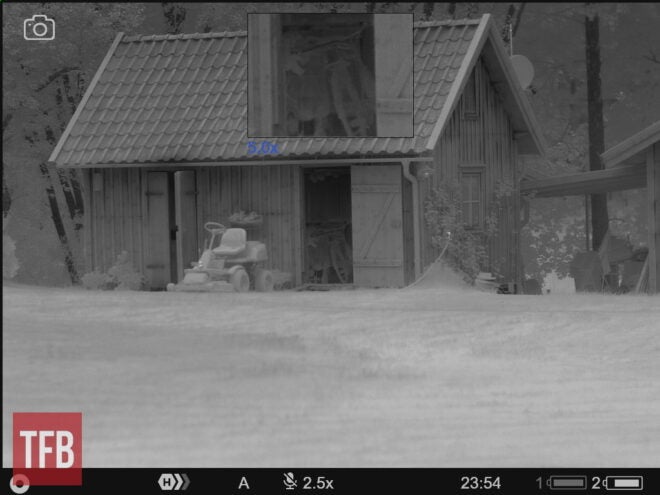
A birdhouse at about 150 meters, in the rain. Most thermals will not give you this kind of clear image.
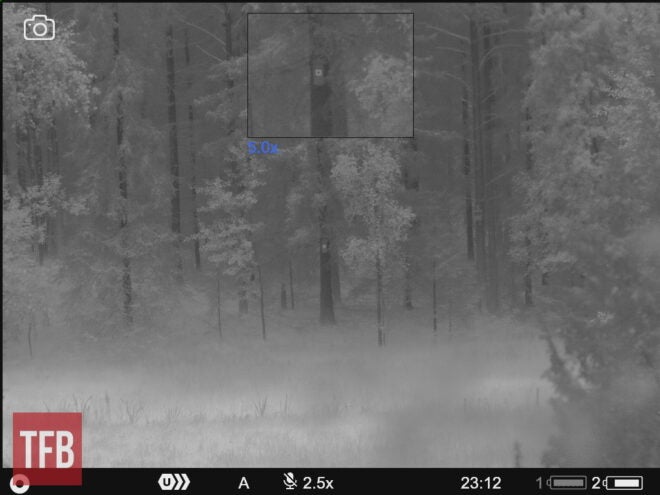
This image freaks me out. It’s taken at night, and it looks like it’s a black-and-white image taken by a camera in the daytime. It’s got details, depth…everything. HD Thermal, bring it on!
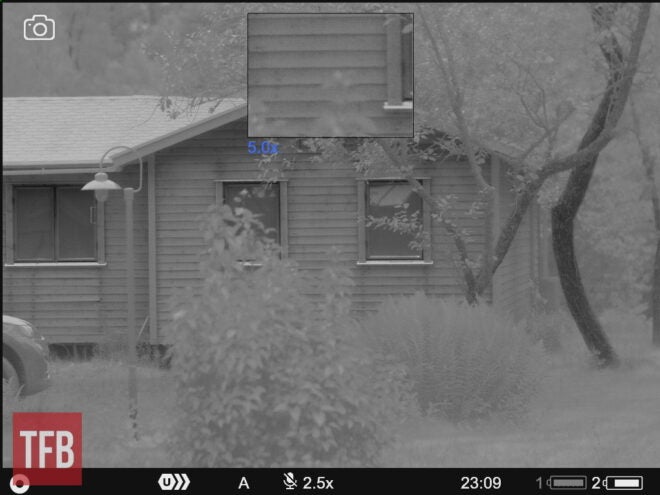
An Audi Q5 in darkness.
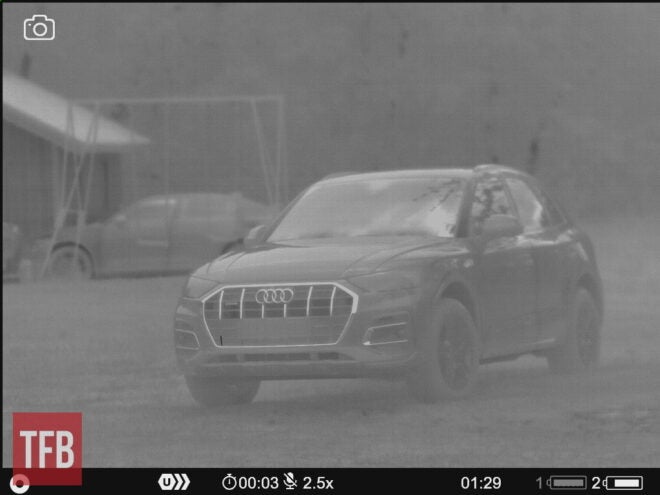
A 1975 Volvo C303, with 6×6 wheel drive. Let the Apocalypse begin! Again the Merger XL delivers a B&W photo, albeit a bit fuzzy.
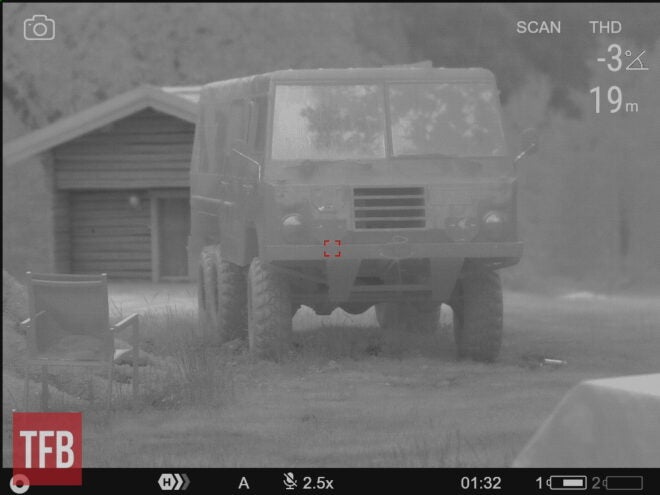
A 1970 Mercedes Benz Pagod on thermal.
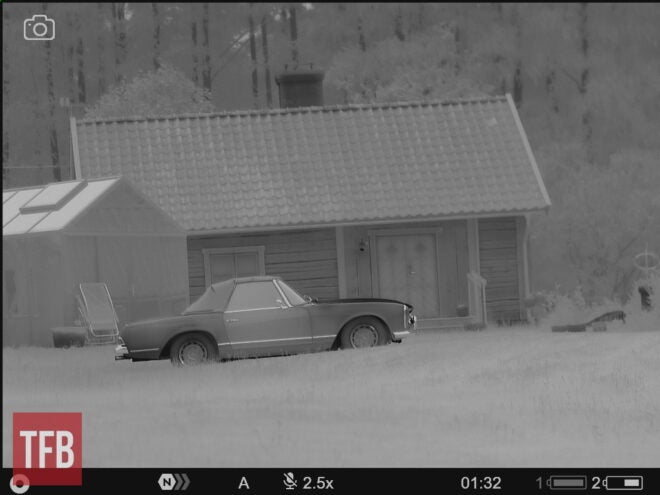
When you’re close to objects, the images become detailed and sharp, but with a feeling someone played with a Photoshop filter. Never has a water tap looked so good on thermal.
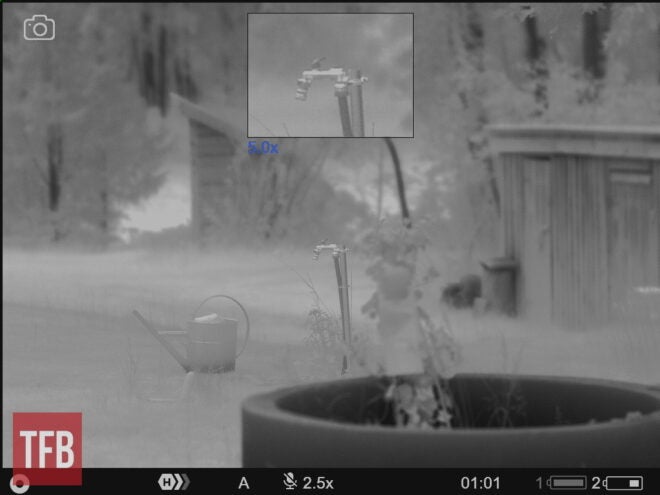
A good example of high resolution AND a good (enough) NETD value, to get details in the trees and the target (roe deer).
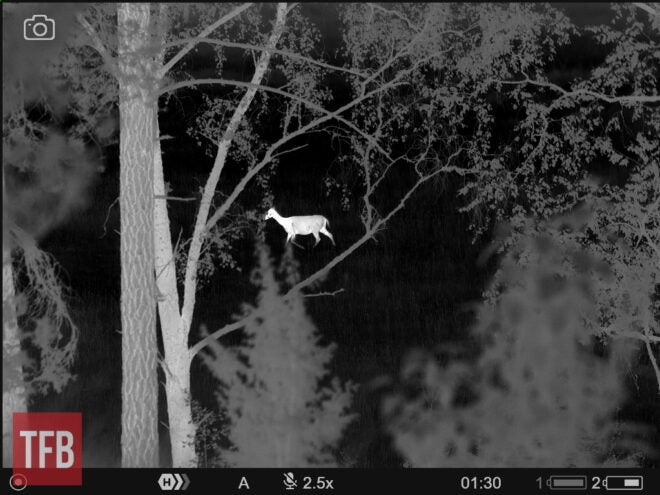
Black hot works really well on the fields.
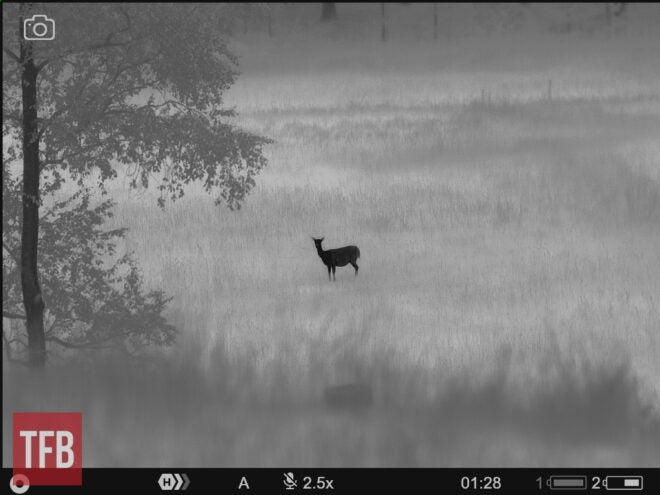
The laser rangefinder is accurate, but some people think they will work through fog, rain, etc., and they just don’t.
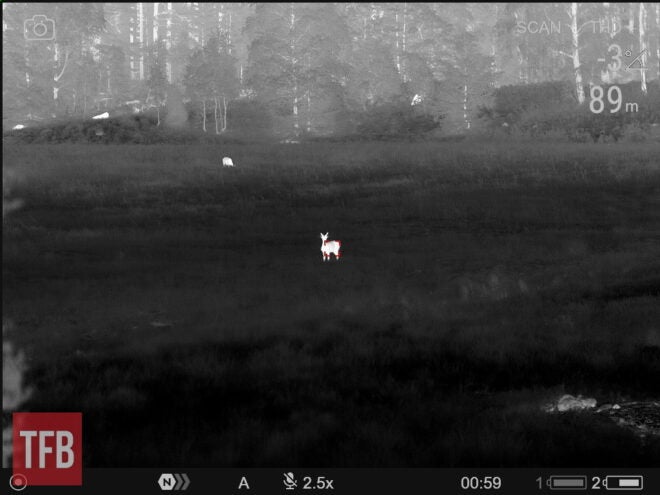
Stretching the distance. There’s something hot out there, at around 800 meters.
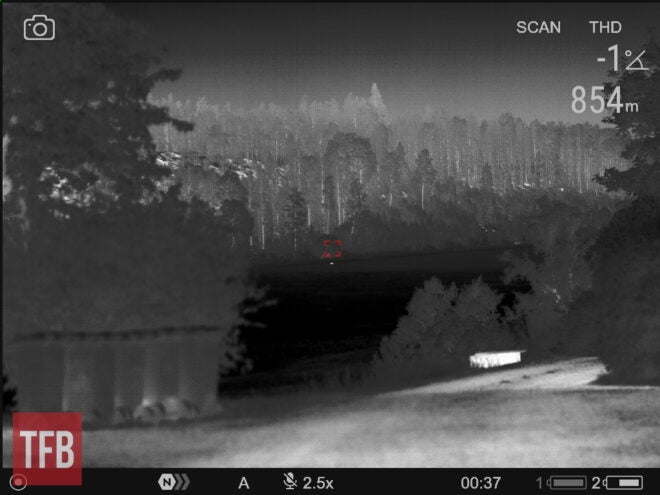
The maximum range for the LRF is 1000 meters. But it goes at least a bit further. Distance verified by Google Earth measurement.
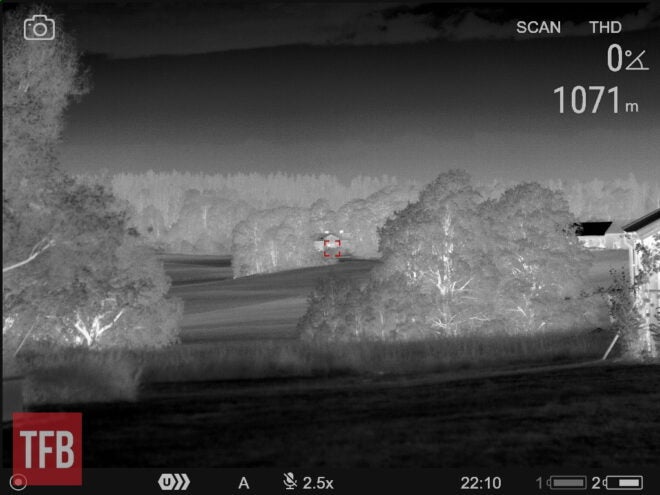
Looking at a car and some people at around 30 meters, but there are several deer in the forest at around 200 meters.
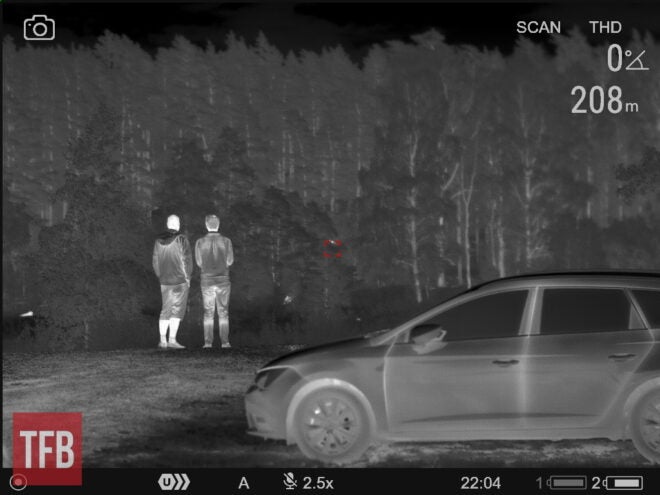
Three little pigs: As I walked the forest I came across these three wild boar in their day sleep. They decided to run for it, and I didn’t really get the focus right at the split second.
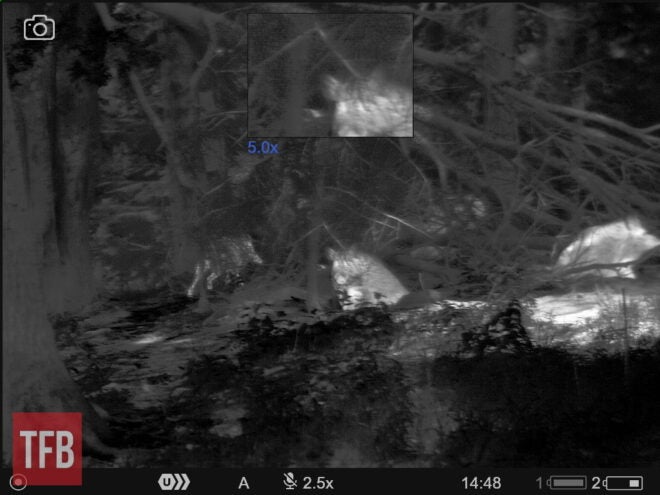
This is from a wildlife park. A moose cow with a newborn. The game warden told me about it, otherwise, I would not have looked in this direction, and it was impossible to see this with the naked eye.
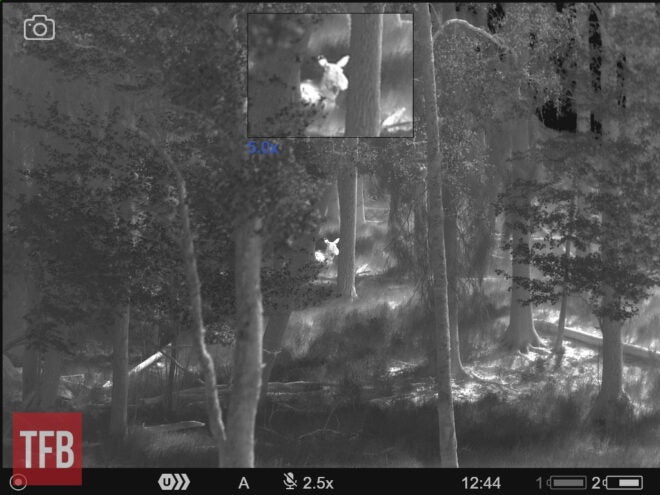
Fallow deer on a field.
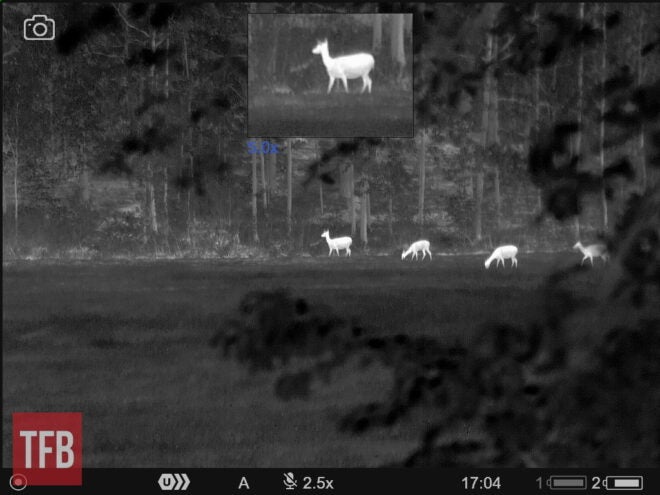
Seipia mode works well too. Note all the details in the forest, rocks, trees, etc. Some thermals will give you the best image of the target (animal), and neglect the surroundings. I think Pulsar’s algorithms give a good overall image.
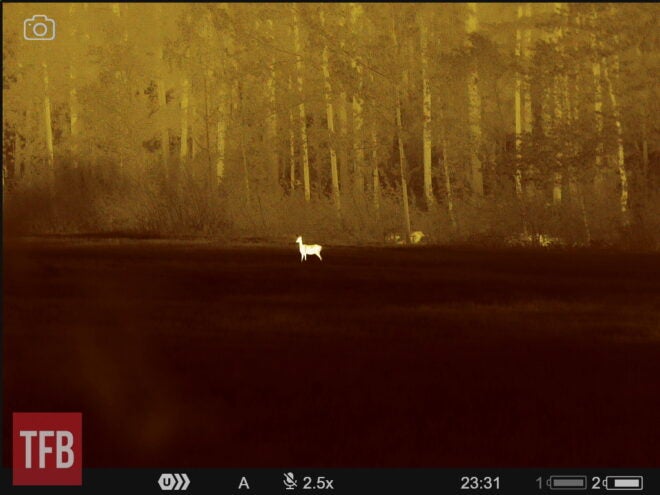
Roe deer buck.
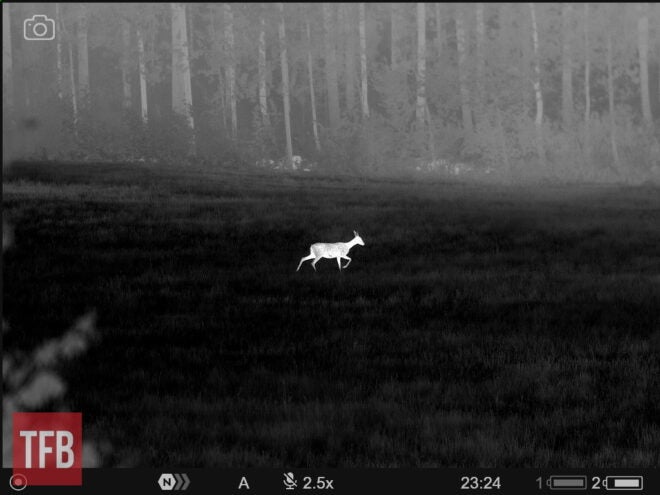
The Heckler & Koch MR223.
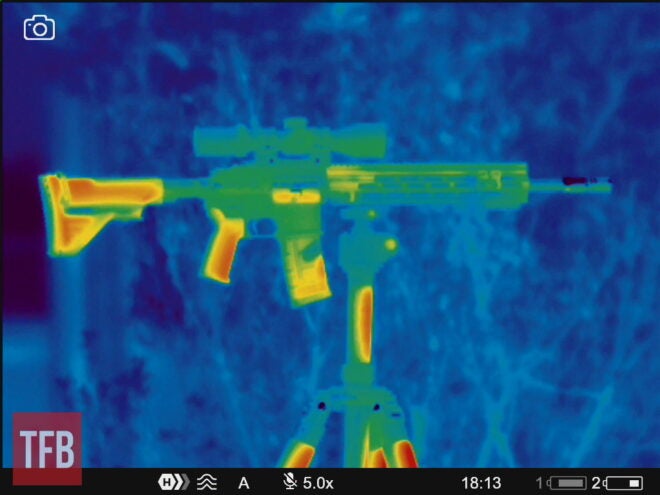
The Ford Mustang GT in thermal.
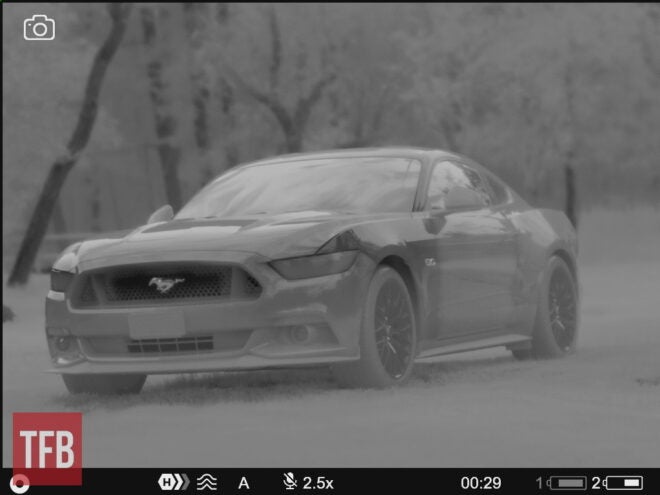
This is close distance, but it’s very rare for a thermal to give enough details so that you can read the brand of the tires: “Michelin”.
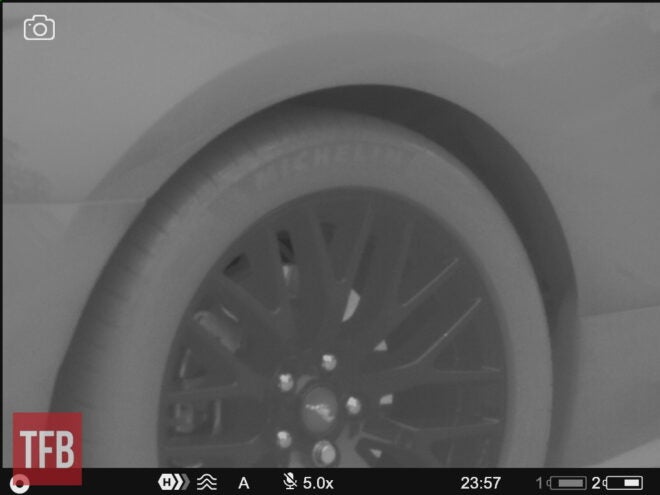
I captured the Moon.
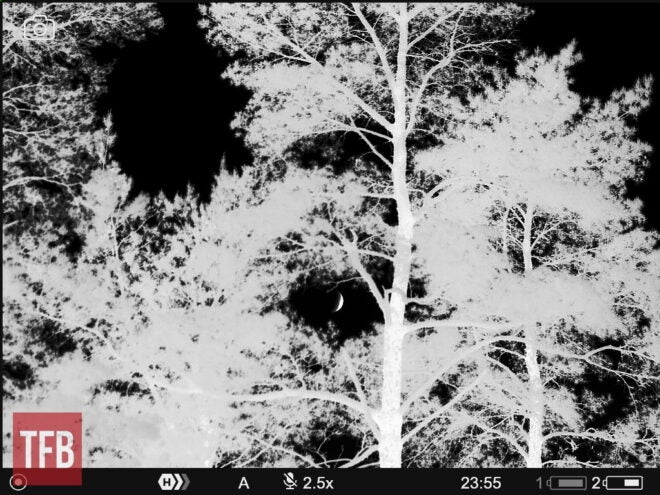
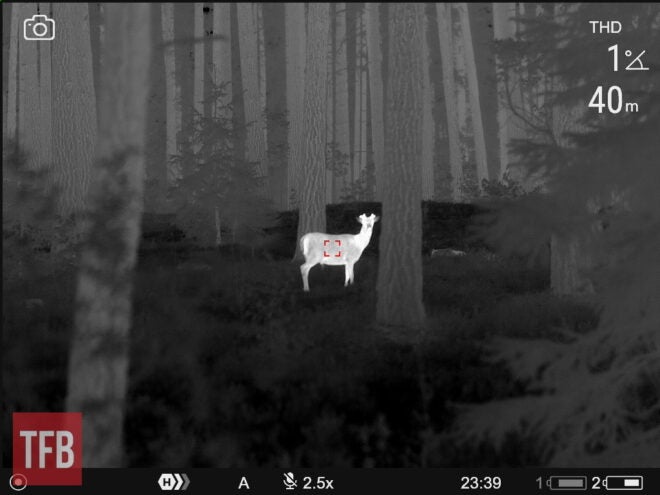
A rabbit running over the field. Moisture level: very high (=low thermal quality)
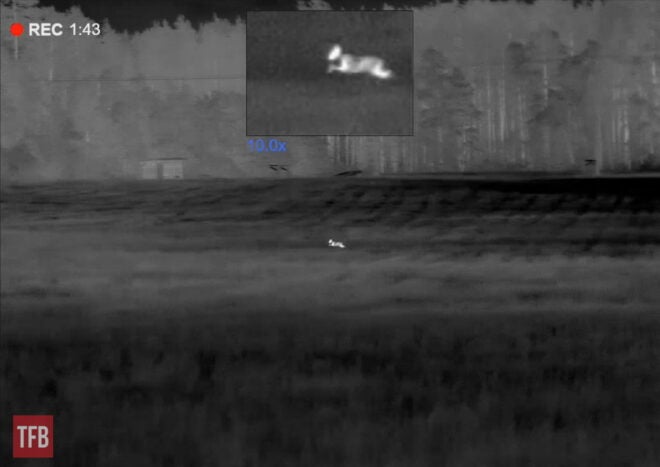
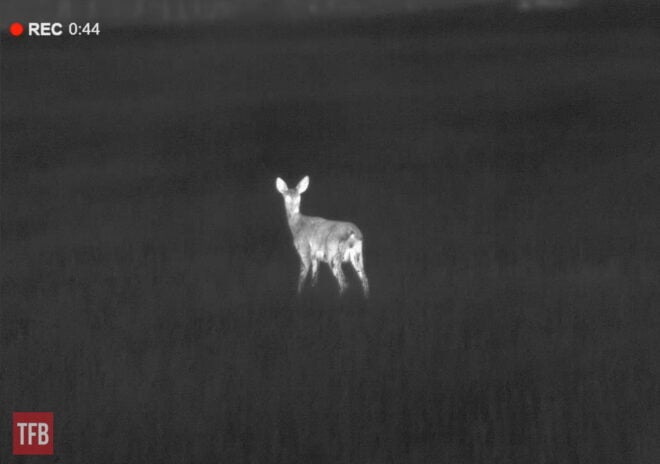
Price & Availability
The Merger XL is Made in Europe and it’s available. The MSRPs are €6670 (Europe) and $8,799.99 (USA).
Conclusion: Pulsar Merger LRF XL50 Thermal Binoculars
Unfortunately, I don’t think any of these images really give an honest perception of what the Merger XL can deliver. There’s a quality loss as the thermal images are uploaded. It’s quite disappointing to say the least, because the thermal performance the Merger XL delivers is quite astonishing.
There are a few occasions where the Merger XP50, with a lower resolution but higher sensitivity, delivers perhaps a slightly sharper and crisper image, but most of the time it has no chance against the HD Thermal XL50. I also feel this is the first thermal I can use the magnification, and still think I have a really good quality image.
Below: At the time of writing, this is the current line-up of Pulsar Mergers.
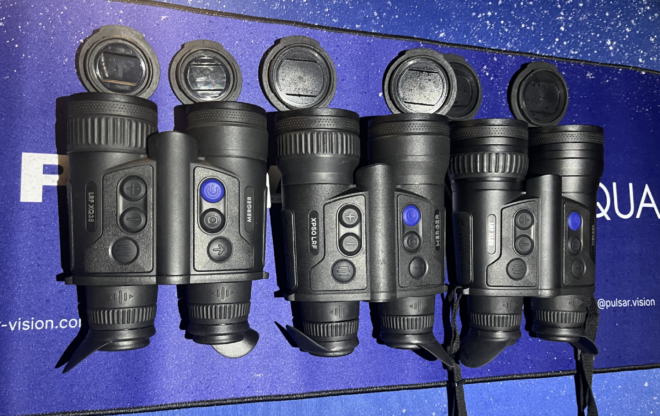
Apart from a firmware upgrade early on, which improved the image quality slightly, I have done nothing but use this device and I had no issues with it.
If you cannot afford these, check out the XL50 and the brand new Merger LRF XQ35 ($3,499 area). You can see it in the image just above, furthest to the left.
Thanks to Country Sport Media and Joel Henrysson for helping me out with some images of the XL50. Apparently, when you own something, you don’t take any images of your device!
Below: The Merger LRF XL50 in the 6×6, 1975 edition. It’s nice to be able to drive a real manual and analog vehicle and combine it with the latest tech.
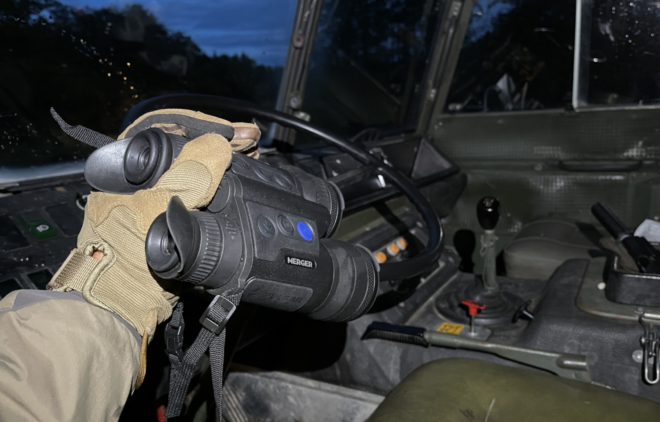
Pros
- Most likely the best Thermal Imaging Binoculars on the market.
- Easy to use and intuitive – classical binocular design with great ergonomics.
- Having both eyes open is more relaxing, and helps with the identification of objects and animals.
- The tech doesn’t care if it’s dark or light – can be used 24/24h.
- The proximity sensor works great.
- Pulsar is a well-reputed brand, with very stable and reliable devices. The Merger XL is no exception.
- Most of the parts are Made in Europe, while some (screen etc.) have to be sourced from The Far East.
- HD Thermal is quite simply outstanding – but sometimes a lower NETD value is more valuable than an HD resolution (close distance, poor weather conditions).
Cons
- HD Thermal is very expensive.
- The ON button could have been made less protruding, to avoid turning it on accidentally.
- The rubber lens covers can be a bit of a pain, but they are needed and I don’t have a better solution to suggest.
- It would be nice to be able to connect it to Pulsar’s Ballistics software, to transfer LRF data to your Pulsar thermal riflescope just before the shot, but I think they are working on that feature.
Here is a direct link to the Pulsar Merger LRF XL50 Thermal Binoculars.
We are committed to finding, researching, and recommending the best products. We earn commissions from purchases you make using the retail links in our product reviews. Learn more about how this works.
 Your Privacy Choices
Your Privacy Choices
